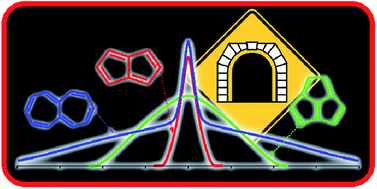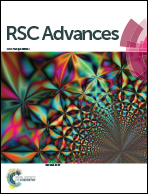Heavy atom tunneling in the automerization of pentalene and other antiaromatic systems†
Abstract
Cyclobutadiene is a well-known system that can automerize (i.e. undergo a π bond-shifting) by a heavy atom tunneling mechanism. To understand the rules that allow this process, a theoretical study has been carried out on the contribution of tunneling to the automerization reactions of several other molecules with antiaromatic π systems: pentalene, heptalene, acepentalene, and substituted pentalenes. The calculations find that automerization of molecules such as pentalene, which have planar structures, are most likely to proceed by rapid carbon tunneling from the lowest vibrational state, since such molecules have relatively low activation energy and narrow barriers. However, if a molecule is not planar (thus formally “non-aromatic”) and/or requires large geometry changes in order to reach the automerization transition state, then the tunneling will be strongly hindered. In some cases, such as heptalene and tri-tert-butylpentalene, the rearrangement of the reactant requires a modest amount of thermal energy, which can be followed by the π bond-shifting through a tunneling mechanism (“thermally activated tunneling”).


 Please wait while we load your content...
Please wait while we load your content...